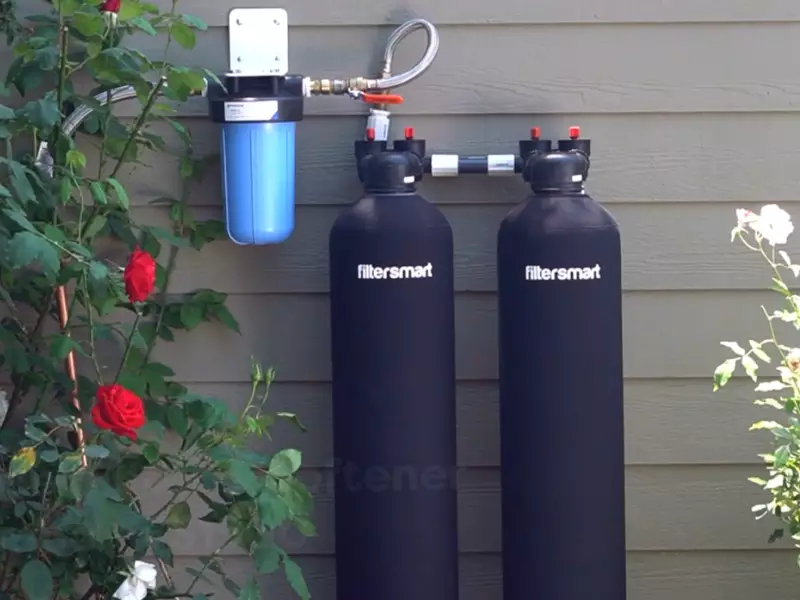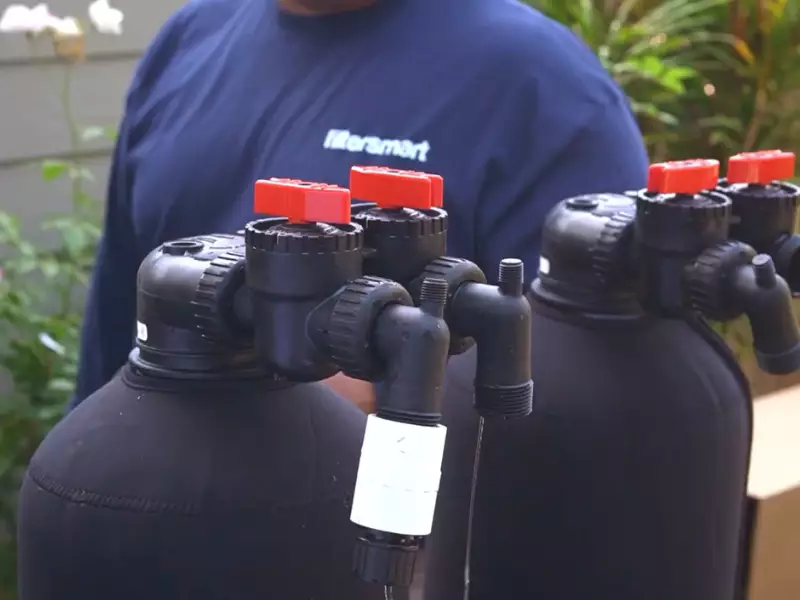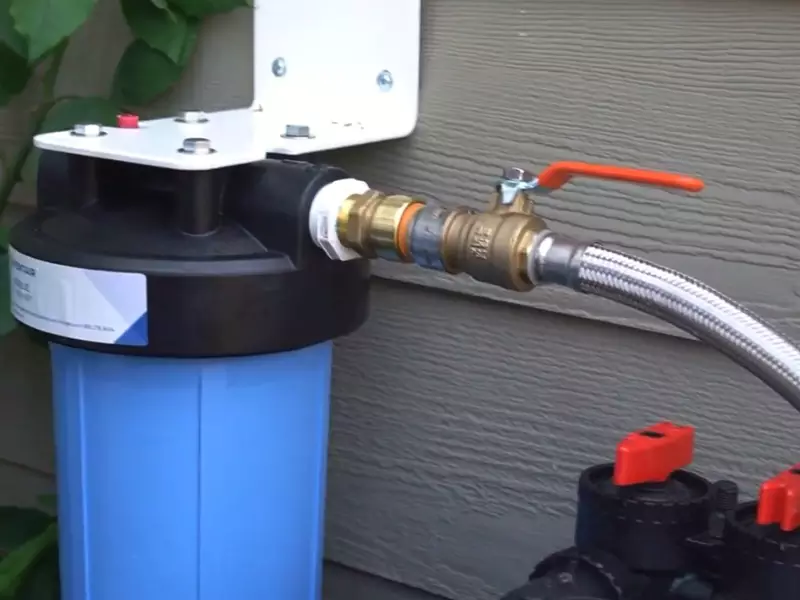Water softening plays a pivotal role in prolonging the lifespan of household appliances and ensuring smooth skin and hair after a bath. The essence of this treatment is to combat the challenges presented by hard water, which is laden with minerals.
Soft water not only benefits our homes but also adds a layer of protection to our health. The two most popular systems are the salt-based and salt-free water softeners. Each has its own methodology and benefits.
Considering the emphasis on water quality, it’s imperative to shed light on how both systems operate and how homeowners can seamlessly install them.
Why Choose a Water Softener?
Water is an essential component of our daily lives. From the refreshing shower in the morning to the dishes we clean at night, it plays a critical role. But when water becomes “hard” due to high mineral content, it can pose several challenges.

Hard Water Woes
- Mineral Deposits in Appliances: Over time, the calcium and magnesium in hard water can accumulate in home appliances like dishwashers and water heaters. This buildup can reduce the efficiency of these devices and can lead to costly repairs or replacements.
- Stiff Laundry: Hard water can make clothes feel rough and less vibrant. The minerals in the water interact with laundry detergents, reducing their effectiveness and leaving residues on clothes.
- Spotty Dishes: Those unattractive spots on glassware aren’t just a cleaning issue. They’re a telltale sign of hard water. The minerals in the water leave behind these traces, giving dishes a cloudy appearance.
- Dry Skin and Hair: Bathing in hard water can strip the skin and hair of their natural oils. This can lead to dryness, itchiness, and even certain skin conditions worsening.
Benefits for Home and Health
- Enhanced Appliance Efficiency: Soft water ensures that appliances run more efficiently. There’s reduced mineral buildup, meaning devices last longer and work at their optimum level.
- Softer Clothes: Soft water allows detergents to work more effectively. This means clothes come out of the wash feeling softer, smelling fresher, and looking brighter.
- Crystal-clear Dishes: Without the mineral residues of hard water, dishes rinse cleaner. This means shinier, spot-free dishes every time.
- Improved Skin and Hair Health: Soft water is gentler on the skin and hair. Bathing becomes a more luxurious experience, with hair feeling silkier and skin more moisturized.
- Cost Savings: With appliances running efficiently, less detergent being used for cleaner clothes, and fewer skin and hair products to combat the effects of hard water, homeowners can realize significant savings over time.
Salt-Based Water Softeners
Salt-based softeners are the traditional remedy for hard water and have been in use for decades.
Basics of Salt-Based Systems
At its core, a salt-based water softener is all about ion exchange. It specifically targets the calcium and magnesium ions responsible for water hardness, replacing them with sodium ions.
Key Components:
- Resin Beads: These are charged with sodium ions. When water flows over them, the unwanted calcium and magnesium ions are swapped for sodium ions.
- Brine Tank: A crucial part of the regeneration process. It’s where salt is dissolved to produce the brine solution necessary to recharge the resin beads.
- Control Valve: This component determines when it’s time for the resin beads to be regenerated. Modern units can be programmed, while others might function based on a timer or manual input.
Steps to Install
- Choose the Right Location: Think accessibility for maintenance, proximity to the water main, and a drain for the backwash cycle.
- Prepare Tools and Equipment: This might include pipe cutters, connectors, and Teflon tape.
- Set Up the Brine Tank: Fill it with the recommended type of salt and ensure the valve settings are correct.
- Connect to the Main Water Line: Ensure proper fittings and check for leaks.
- Finalize and Test: Turn on the water, let the tank fill, and test the system to ensure soft water is being produced.

Salt-Free Water Softeners
For those wary of adding sodium to their water or concerned about the environmental impact of salt-based systems, salt-free softeners present an appealing alternative.
How They Function:
Instead of removing hard minerals, salt-free softeners crystallize or “condition” them. This means the minerals remain in the water but won’t stick to surfaces or appliances.
Major Parts:
- Media Tank: Contains a medium (often specialized filter media) that induces crystallization of the minerals.
- Head Unit: Regulates water flow through the media tank.
Steps to Install
- Determine the Best Spot: Close to the main water line, but also consider ease of access for potential maintenance.
- Gather Necessary Tools: This might include wrenches, connectors, and pipe sealant.
- Attach the Media Tank: Secure it in place, ensuring it’s upright and stable.
- Link System to Home Plumbing: Use quality connectors to ensure a snug fit and check meticulously for any potential leaks.
- Run and Confirm: After installation, let water flow through the system, checking its quality post-conditioning.
Salt-Free Water Softeners
Salt-free water softeners have gained traction among homeowners who are environmentally conscious or who have sodium-related health concerns.
How They Function
Salt-free softeners, also known as water conditioners, adopt a distinct approach to treating hard water. Rather than replacing calcium and magnesium ions with sodium, these systems transform these minerals into crystal structures.
In this crystallized form, the minerals remain suspended in the water, preventing them from adhering to surfaces. This way, homeowners can mitigate the challenges of hard water without adding sodium or discharging brine.
Major Parts
- Media Tank: Houses the catalyst (often made from a specialized filtering material) that promotes the crystallization of minerals.
- Control Head Unit: Supervises the flow of water through the system, ensuring effective conditioning throughout.
Steps to Install
Installation location is crucial. Ideally, the softener should be close to where the water enters the home, yet in a spot that allows for easy maintenance and doesn’t obstruct other utilities.
Pre-Installation Measures
- Water Test: Before starting, conduct a water hardness test. This helps you gauge the level of hardness and ensures you choose an adequately sized system.
- Review Instructions: Always read the manufacturer’s guidelines thoroughly before beginning the installation. This helps anticipate any special requirements.
Attaching the Unit
- Position the Media Tank: Place it firmly on a flat surface, ensuring it’s upright. Some units come with base platforms for added stability.
- Secure the Head Unit: Attach it atop the media tank, ensuring it aligns correctly with inlets and outlets.
Linking to Home Plumbing
- Turn Off Main Water Supply: Before any plumbing work, always shut off the water supply.
- Connect the Unit: Using high-quality connectors, link the softener to your home’s plumbing. Ensure connections are tight to prevent leaks.
Completion and Trial
- Restore Water Supply: Gradually turn the water back on, filling the system.
- Check for Leaks: Once filled, inspect all connections for leaks.
- Run a Trial: Let the water run through the system and assess the quality. If possible, perform another hardness test to verify the system’s efficacy.

Comparison: Salt-Based vs. Salt-Free
When determining which softening method is best for your home, several factors come into play. Here’s a comparison to help guide your decision.
Efficacy in Softening
Salt-Based: Removes hard minerals, directly providing soft water. Salt-Free: Conditions or crystallizes minerals. They stay in the water but won’t cause scale buildup.
Environmental Impact
Salt-Based: Uses salt, leading to brine discharge which can affect the environment. Salt-Free: No salt or brine discharge, making it eco-friendlier.
Maintenance Needs
Salt-Based: Requires periodic salt replenishment and potential resin bead replacements. Salt-Free: Generally has lower maintenance, though the media might need replacement after a long duration.
Cost Factors
Salt-Based: Often cheaper initially, but with recurring salt costs. Salt-Free: Might have a higher initial cost but saves on long-term maintenance and salt purchases.
Tips for Optimal Performance
For any water softener system to function effectively, certain practices need to be adhered to:
Regular Maintenance
- Inspect Periodically: Whether it’s checking salt levels in a brine tank or assessing the media in a salt-free system, regular inspections ensure longevity.
- Cleanse the System: Over time, impurities might accumulate. Periodic cleansing (as per manufacturer’s guidelines) can maintain peak performance.
Avoiding Common Mistakes
- Overloading with Salt: For salt-based systems, adding too much salt can cause bridging or mushing, affecting performance.
- Ignoring Leaks: Even minor leaks can compromise the efficiency of the system and lead to water wastage.
Choosing Quality Salts (for salt-based)
- Opt for Evaporated Salt: Though a bit pricier, it’s purer and ensures better ion exchange.
- Avoid Rock Salts: They often contain impurities that can clog the system.
- Consider Potassium: For those with sodium concerns, potassium can be an alternative, though it’s costlier than regular salts.
Frequently Asked Questions
How long do salt-based systems last?
Typically, with proper maintenance, they can last between 20 to 30 years.
Do salt-free softeners actually soften water?
They condition the water by preventing mineral buildup, but they don’t remove the minerals like salt-based systems.
Is there a significant cost difference in maintaining the two systems?
Salt-based systems require regular salt refills, which come at a cost. Salt-free systems, on the other hand, have minimal ongoing expenses.
Conclusion
The quest for quality water is not just about quenching thirst; it’s about longevity, health, and the comfort of daily tasks. Salt-based and salt-free softeners present effective solutions, with the choice boiling down to personal preferences and specific needs.
While salt-based systems have been around for a longer time and are renowned for their efficiency, salt-free softeners are making waves with their eco-friendly approach and low maintenance.
With a clear distinction between the two, homeowners can make informed decisions, ensuring their households benefit from optimal water quality.